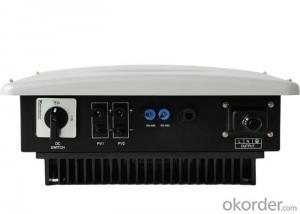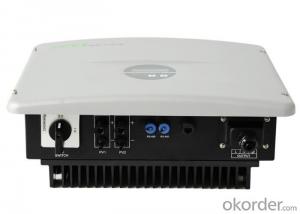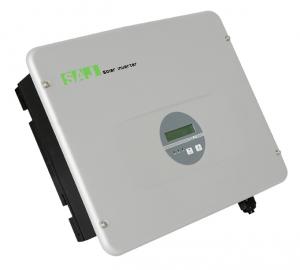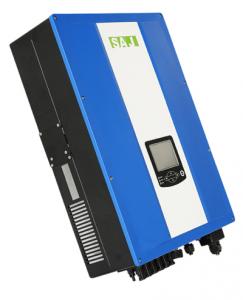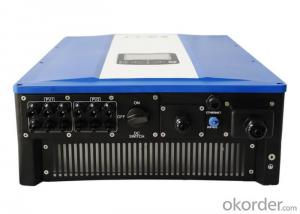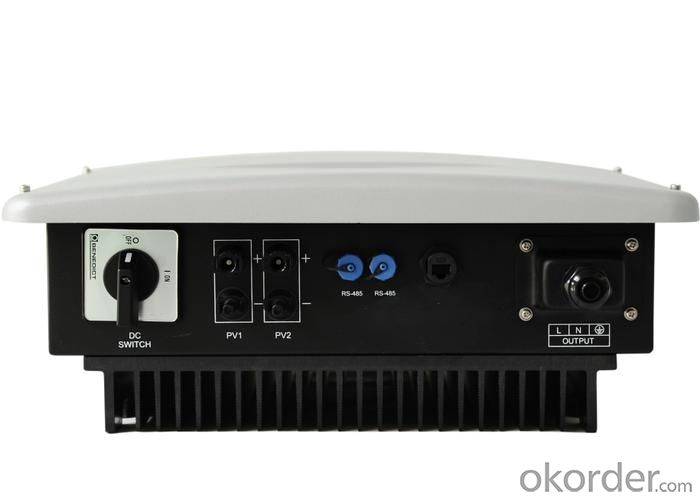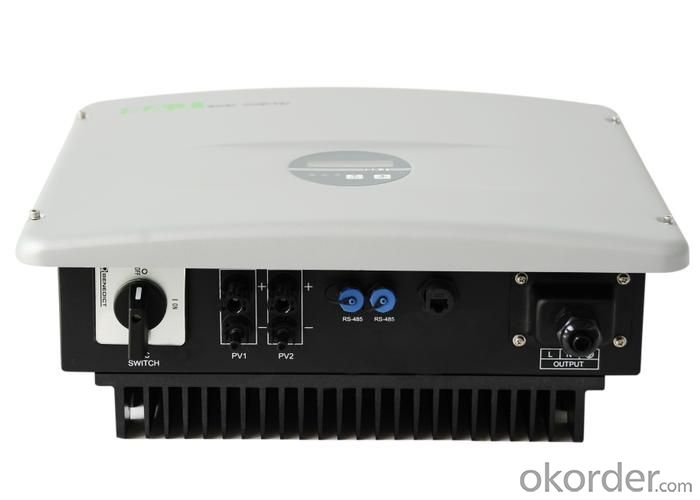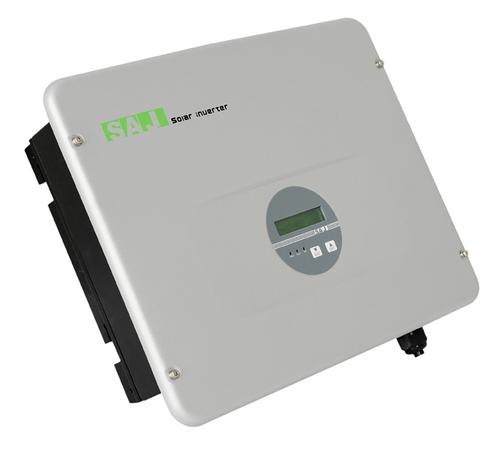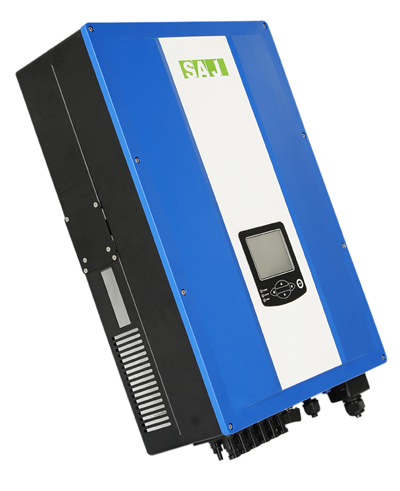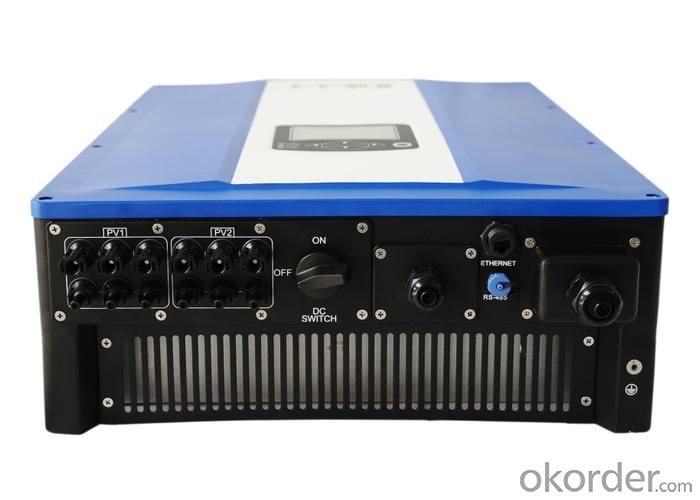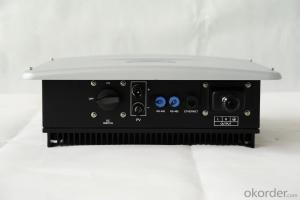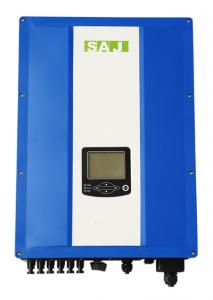On Grid Solar Inverter Sununo-TL3KB 1MPPT
- Loading Port:
- Guangzhou
- Payment Terms:
- TT or LC
- Min Order Qty:
- 28 unit
- Supply Capability:
- 5000 unit/month
OKorder Service Pledge
OKorder Financial Service
You Might Also Like
Product Advantages:
1.Flexible
• Ethernet / Wi-Fi communication
• Wide range of DC input voltage
• IP65 for indoor and outdoor use
2.Reliable
• Comprehensive protection functions
• Compact design, fanless
• First-class components
3.Efficient
• Max. efficiency up to 97.7%
• Euro. efficiency up to 97.1%
• MPPT accuracy up to 99.9%
4. Certificates:
TUV,SAA,G83,ISO9001,ISO14001,etc.
Futures
■ Super junction MOSFET integrated with 97.7% Max. efficiency.
■ Wide MPPT voltage range and low minimum MPPT voltage for flexible configuration.
■ Transformerless design for lower cost and compact size.
■ IP65 and fan-less for longer-term reliability.
■ Ethernet/ Wi-Fi communication interface.
■ Integrated Web Server for local and internet monitoring.
■ Support SAJ Web Portal Monitoring Solutions.
Specifications
Model | Sununo-TL3KB | Sununo-TL4KB |
Max. DC power [W] | 3400 | 4500 |
Max. DC voltage [V] | 580 | 580 |
MPPT DC voltage Range [V] | 120-500 | 120-500 |
Nominal DC voltage [V] | 360 | 360 |
start voltage [V] | 150 | 150 |
Min.DC voltage [V] | 100 | 100 |
Max.DC input current [A] | 17 | 20 |
Number of MPPT | 1 | 1 |
string per MPPT | 2 | 2 |
DC switch | optional | optional |
Images
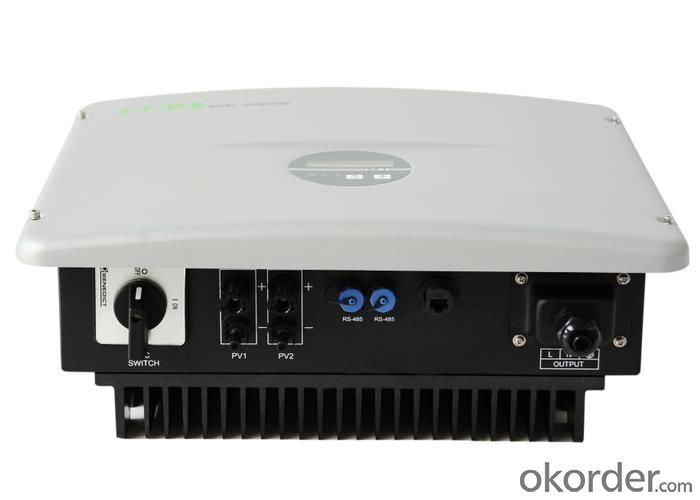
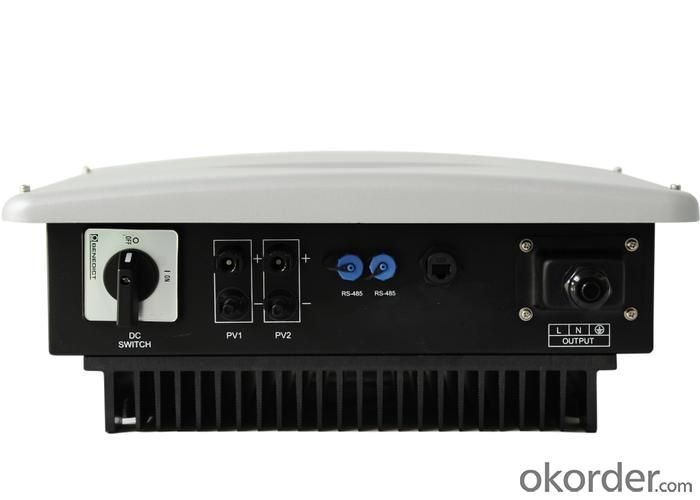
FAQ
1. How long will my inquiry get response?
Your inquiry related to our products or prices will be replied within 24 hours.
2. Can I get professional service and suggestion?
Well-trained and experienced staffs to answer all your questions in fluent English.
3. Do you accept OEM or customized design?
OEM & ODM, any your customized lightings we can help you to design and put into product.
4. What if I need specific design?
Distributorship are offered for your unique design and some our current models.
- Q: Can a solar inverter be used for off-grid systems?
- Yes, a solar inverter can be used for off-grid systems. Off-grid systems are not connected to the utility grid and rely solely on renewable energy sources like solar panels. A solar inverter converts the direct current (DC) generated by the solar panels into alternating current (AC) which can be used to power appliances and devices in an off-grid system.
- Q: Can a solar inverter be used with solar-powered greenhouse systems?
- Yes, a solar inverter can be used with solar-powered greenhouse systems. A solar inverter is responsible for converting the DC power produced by solar panels into AC power that can be used to run electrical devices. In the context of a solar-powered greenhouse system, the solar inverter would be essential for converting the solar energy collected by the panels into usable electricity to power various components such as fans, pumps, lighting, and climate control systems within the greenhouse.
- Q: Can a solar inverter be used with different grid voltages?
- No, a solar inverter cannot be used with different grid voltages. Solar inverters are designed to convert the DC power generated by solar panels into AC power that matches the specific voltage and frequency of the grid. Using a solar inverter with different grid voltages can cause damage to the inverter and can also be a safety hazard.
- Q: Can a solar inverter be used with different types of solar tracking systems?
- Yes, a solar inverter can be used with different types of solar tracking systems. Solar inverters are designed to convert the direct current (DC) produced by solar panels into alternating current (AC) for use in homes or businesses. They are compatible with various solar tracking systems, including single-axis and dual-axis trackers, as long as the voltage and power ratings of the inverter match the requirements of the specific tracking system.
- Q: What is the role of a grid protection relay in a solar inverter?
- The role of a grid protection relay in a solar inverter is to monitor the electrical grid for any abnormalities or faults, and to disconnect the solar inverter from the grid if necessary. This helps to ensure the safety and stability of the grid, as well as protecting the solar inverter from potential damage.
- Q: Can a solar inverter be used with different monitoring platforms?
- Yes, a solar inverter can be used with different monitoring platforms as long as the monitoring platforms are compatible with the inverter's communication protocols and data formats.
- Q: What is the maximum output power of a solar inverter?
- The maximum output power of a solar inverter depends on its size and specifications. Typical residential solar inverters have a maximum output power ranging from 1 kilowatt (kW) to 10 kW, while commercial and utility-scale inverters can reach several megawatts (MW) of power output.
- Q: Can a solar inverter be used with a solar-powered electric vehicle charging infrastructure?
- Yes, a solar inverter can be used with a solar-powered electric vehicle charging infrastructure. The solar inverter converts the direct current (DC) produced by the solar panels into alternating current (AC) which is compatible with the electric vehicle charging system. This allows for the utilization of solar energy to power the charging infrastructure for electric vehicles.
- Q: Can a solar inverter be used with building-integrated photovoltaics (BIPV)?
- Yes, a solar inverter can be used with building-integrated photovoltaics (BIPV). The solar inverter is an essential component that converts the DC power generated by the BIPV system into AC power suitable for use in buildings. It ensures efficient utilization of the solar energy produced by the BIPV system and enables integration with the electrical grid or building's power system.
- Q: Can a solar inverter be used in regions with high humidity or moisture levels?
- Yes, solar inverters can be used in regions with high humidity or moisture levels. However, it is important to ensure that the inverters are designed and built to withstand such conditions. Waterproof or moisture-resistant features may be necessary to protect the inverters from potential damage caused by moisture or humidity. Regular maintenance and monitoring are also recommended to ensure optimal performance in such environments.
Send your message to us
On Grid Solar Inverter Sununo-TL3KB 1MPPT
- Loading Port:
- Guangzhou
- Payment Terms:
- TT or LC
- Min Order Qty:
- 28 unit
- Supply Capability:
- 5000 unit/month
OKorder Service Pledge
OKorder Financial Service
Similar products
Hot products
Hot Searches
Related keywords
